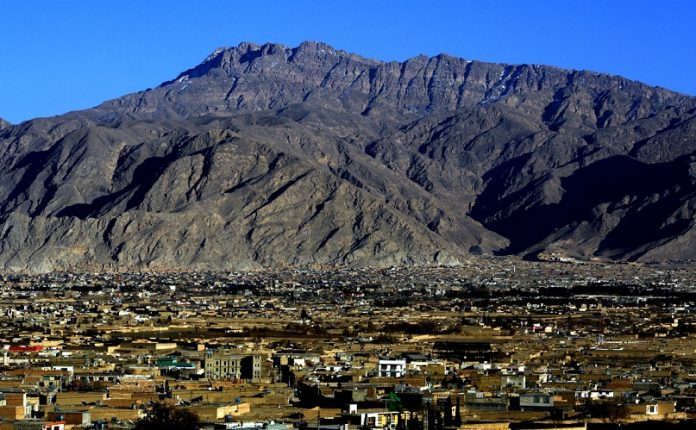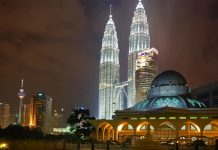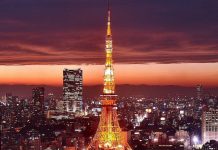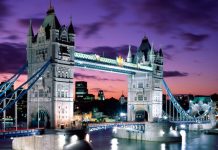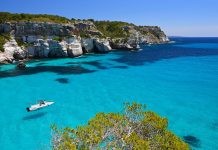Pakistan is officially known as the Islamic Republic of Pakistan and is located in South Asia.
It is 339, 697 square miles in area or 879, 815 square kilometres and was originally created from the northwest side of India in 1947. (‘The partition’). In 1971, East Pakistan seceded and Bangladesh was formed. There is still an on-going dispute over the state of Kashmir.
Pakistan is the second largest Muslim nation in the world, second only to Indonesia. Ninety-six percent of Pakistan’s population is Muslim and about one and half percent are Christian. Pakistan’s military is the sixth largest in the world, while almost one fifth of their population lives below the international poverty line.
The geography of Pakistan is mostly mountainous, along with the Khyber Pass, its history goes back several thousand years. Pakistan is also home to K-2, which is the second tallest mountain in the world. Pakistan is also rich with lakes and rivers, including the Indus River, flowing 1,800 miles through Pakistan.
The climate of Pakistan is mostly one of seasonal extremes, with a monsoon season from June to September. Temperatures can get very chilly during December through to February, and spring can be dry and warm.
A study in contrasts, Pakistan also boasts several deserts in Sind and Punjab, as well as the famous and ancient Silk Road, leading north from China, through Kashmir and Tammu. Taxila, the oldest known university in the world, is also in Pakistan.
The borders of Pakistan touch Afghanistan, Kashmir, Jammu, India, and Iran, along with the Arabian Sea. There are several provinces including Sind, Punjab, North-West Frontier, and the Federally Administered Tribal Areas. The geography of Pakistan is diverse, and has something to offer everyone, from sunny beaches in the south, to snow-capped mountains in the north.
The capital of Pakistan is Islamabad, officially designated as the capital in 1961, but not actually activated as the capital until 1966. The government buildings had to be constructed and then the government seat moved.
Islamabad is a modern city with hotels, modern government and office buildings, and an international airport. Nearby is the ancient city of Rawalpindi, a famous tourist destination.
The population of Pakistan is just over 170 million people with a parliamentary federal republic. Pakistan has a coalition government and last held elections in 2008. The Head of State is the President and the Head of Government is the Prime Minister. Pakistan has a two-house Parliament called the ‘Majlis-e-Shura’, which consists of a Senate of 100 members and a National Assembly of 342 members. The judicial system is a mix of Islamic and secular courts and includes a Supreme Court, Federal Shari’a courts which are the courts that oversee and administer Islamic law, and provincial courts. Pakistan’s secular laws are based on British Common Law, and all Pakistani citizens over the age of 18 have the right to vote.
There are several ethnic groups in Pakistan, with the largest being the Punjabi, totalling forty-four percent of the total population. Next is the Pashtun at fifteen percent, then Sindhi at fourteen percent, Sariaki at ten and a half percent, Urdu at almost eight percent, Balochi at almost four percent and a mix of smaller diverse groups making up the remaining five percent.
The official language of Pakistan is English; however the national language is Urdu. Punjabi is the native language of 48 percent of Pakistanis, and then comes Sindhi at 12 percent, followed by Siraiki at ten percent, Pashtu at eight percent, and Balochi at three percent, and then a group of smaller languages.
Religion isn’t nearly as diverse. Almost ninety-seven percent of all Pakistanis are Muslim, with the remaining portion of the population consisting of Christians, Hindus, Parsi, Sikhs, (Zoroastirans), Buddhists, and a smattering of other faiths. Almost seventy-five percent of the Pakistani population are Sunni Muslim, and twenty percent are Shi’a Muslim. The majority of Pakistani Sunni Muslims are Hanafi Sunni Muslims, and the Pakistani Shi’a belongs to the Ithna Asharia.
The economy of Pakistan has been slow to grow, but shows great potential. Internal political unrest and the conflict with India has hampered foreign investment in Pakistan, although there seem to be signs of improvement. Pakistan exports textiles, labour, carpets, and rice. It also imports petroleum products, steel, oil, and machinery.
Health care and health indicators in Pakistan are generally poor. Health funding, health and sanitation infrastructures are underfunded, particularly in rural areas. A significant percentage of the Pakistani population, almost nineteen percent, is malnourished, and for children under five years of age this number is thirty percent. Gastroenteritis, congenital abnormalities, respiratory infections, tuberculosis, typhoid fever, and malaria are the leading causes of sickness and death. Hepatitis C and B are virulent in Pakistan, with three million cases of each in the country, and the number is growing. There is a real scarcity of doctors in Pakistan, averaging only one for 1,225 people. To complicate this, almost half of all medicines available in Pakistan are either fake or of inferior quality.
Cultural performances are an important part of traditional life in Pakistan. Dance and music are unique to the ethnic culture of the many performers, and typically the performer will wear a costumer featuring an ethnic design identifying their tribe or ethnic group. Just as their costume identifies their tribe or ethnic group, so does the music or particular dance or ritual. Dancing in a circle is a basic formation for many Pakistani folk dances and is used in many versions. There is also the Jhoomer which involves spinning at top speed and which is done by men by the light of flickering torches, on dark nights. Music and dance are an integral part of life in the Pakistani culture.
Pakistanis have four principal groups of musical instruments with over six hundred Pakistani musical instruments. The most well-known of these is the sitar, rabab, tanpura, veena, and sur mandal. The sitar is regarded as typically the most common, however in Pakistani music, the table, a two piece drum is considered the most important instrument for accompaniment for all Pakistani music and dancing. Nearly all the instruments in Pakistani music are used in solo performances because the concept of orchestral music isn’t part of Pakistani music theory. Pakistani music is evolving, though, and western musical influence is starting to be seen, as piano, accordion and violin are now included more and more often in Pakistani music.

